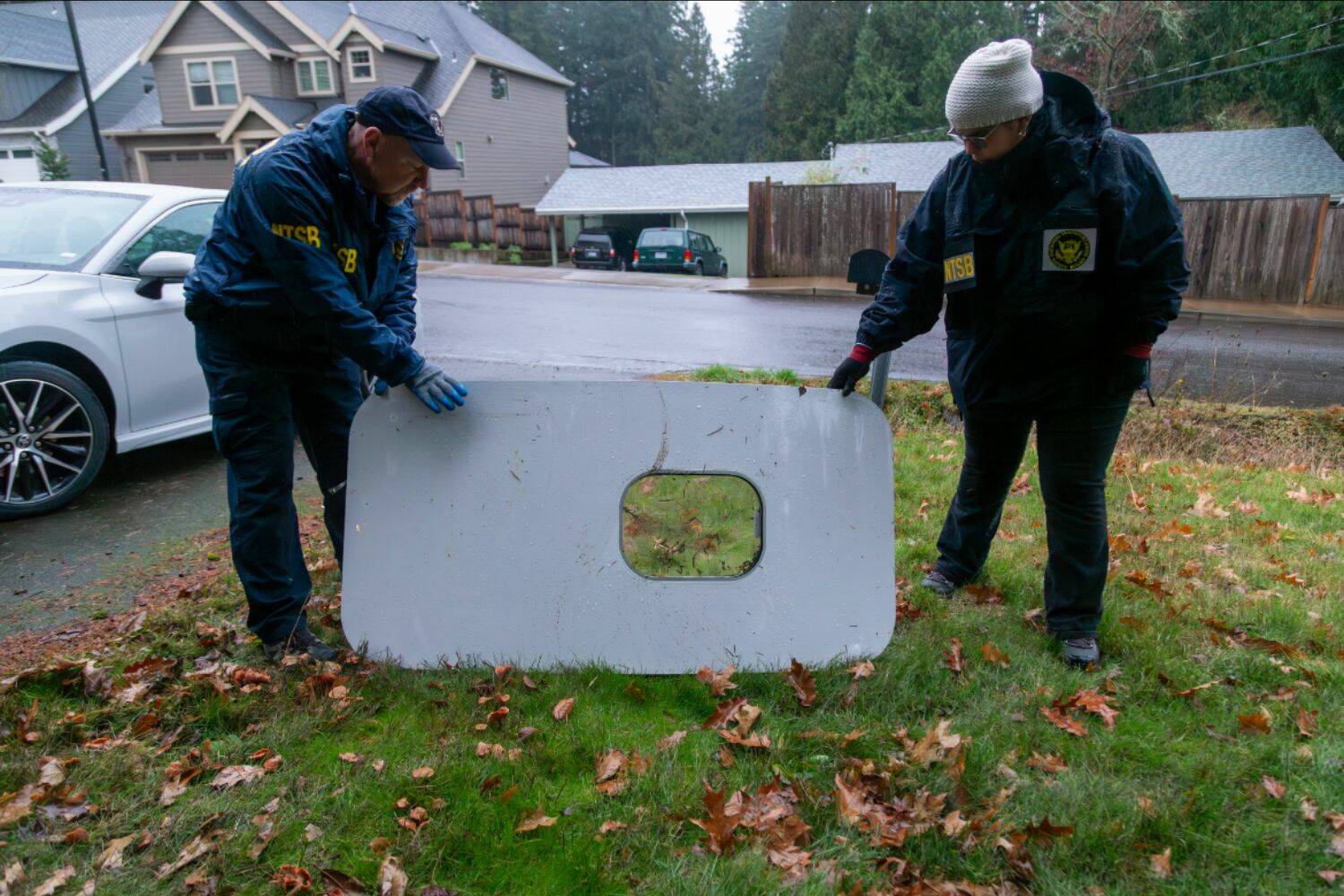Passengers on an Alaska Airlines flight who watched the Boeing-constructed plane doors fly off mid-flight are taking legal action against the airline and the manufacturer.
On Jan. 15, attorney Mark Lindquist announced he had filed a lawsuit against Alaska Airlines and Boeing on behalf of four passengers on Alaska Airlines Flight 1282.
On Jan. 5, the Boeing 737 Max plane was flying from Portland, Oregon, to Ontario, California, at 16,000 feet of elevation. According to Lindquist’s firm, there was a loud bang and blare as a door plug blew out of the fuselage and the plane rapidly depressurized.
In the legal complaint, Lindquist alleged: “This shocking blowout caused intense fear, distress, anxiety, trauma, physical pain and other injuries to plaintiffs and fellow passengers.”
Lindquist, who represented dozens of victim families in the two fatal crashes of the Boeing 737 Max 8 in 2018 and 2019, said Boeing has long been on notice of “quality control issues” and allegations the company “puts profits ahead of safety.”
Boeing manufactures planes in Renton and Everett.
The nearly new Max 9 plane was put into service on Oct. 31, 2023, according to Lindquist’s office.
“Boeing delivered a plane with a faulty door plug that blew out of the fuselage at 16,000-feet and air masks that apparently did not function properly,” the lawsuit alleges. “Plaintiffs feared the gaping hole in the fuselage, rapid depressurization, and general havoc was a prelude to the plane’s destruction and their own likely death.”
According to Lindquist, “Some passengers were sending what they thought would be their final text messages in this world.”
One plaintiff reportedly wrote in a text: “Mom our plane depressed. We’re in masks. I love you.”
Alaska Airlines is also named as one of the defendants. Lindquist alleges that Alaska Airlines management decided the subject plane was not safe to fly over the ocean, but was somehow safe enough to fly over land.
At the time of the blowout, the plane was still climbing, nobody was seated directly next to the door plug, and passengers were still wearing their seatbelts.
Lindquist says terror among passengers continued on the plane for several minutes. Passengers did not know if the plane could continue to fly while depressurized with a gaping hole in the fuselage. Eventually, the plane completed a successful emergency landing at the Portland airport.
The lawsuit charges three counts: one count of Negligence against both Boeing, one count of Strict Product Liability against Boeing under Washinton’s Product Liability Act, and one count of Negligence against Alaska Airlines.
The Federal Aviation Administration and the National Transportation Safety Board are investigating the incident and surrounding circumstances. Meanwhile, the Max 9 was grounded.
In addition to civil litigation by Lindquist and other aviation attorneys around the country after the Max 8 crashes, Boeing faced criminal charges by the Department of Justice.
A few days after the Max 9 incident, the Boeing CEO referred to the blowout as a “quality escape,” which Lindquist cites in the lawsuit. The CEO explained “quality escape” was “anything that could potentially lead to an accident.” The lawsuit alleges the CEO admitted “a mistake” by Boeing.
Investigators at this stage are focusing on the four bolts that held in place the door plug that blew out. The door plug was recovered in a Portland resident’s backyard.
Alaska Airlines offered a quick payment of $1,500 to passengers who were notified by email. Lindquist said many passengers found this “offensive,” in both the amount and the lack of a personal touch.
More individual lawsuits are expected by additional passengers and additional lawyers, according to Lindquist’s firm. A judge has not certified a class action and may decide none of the lawsuits qualify as a class action.







